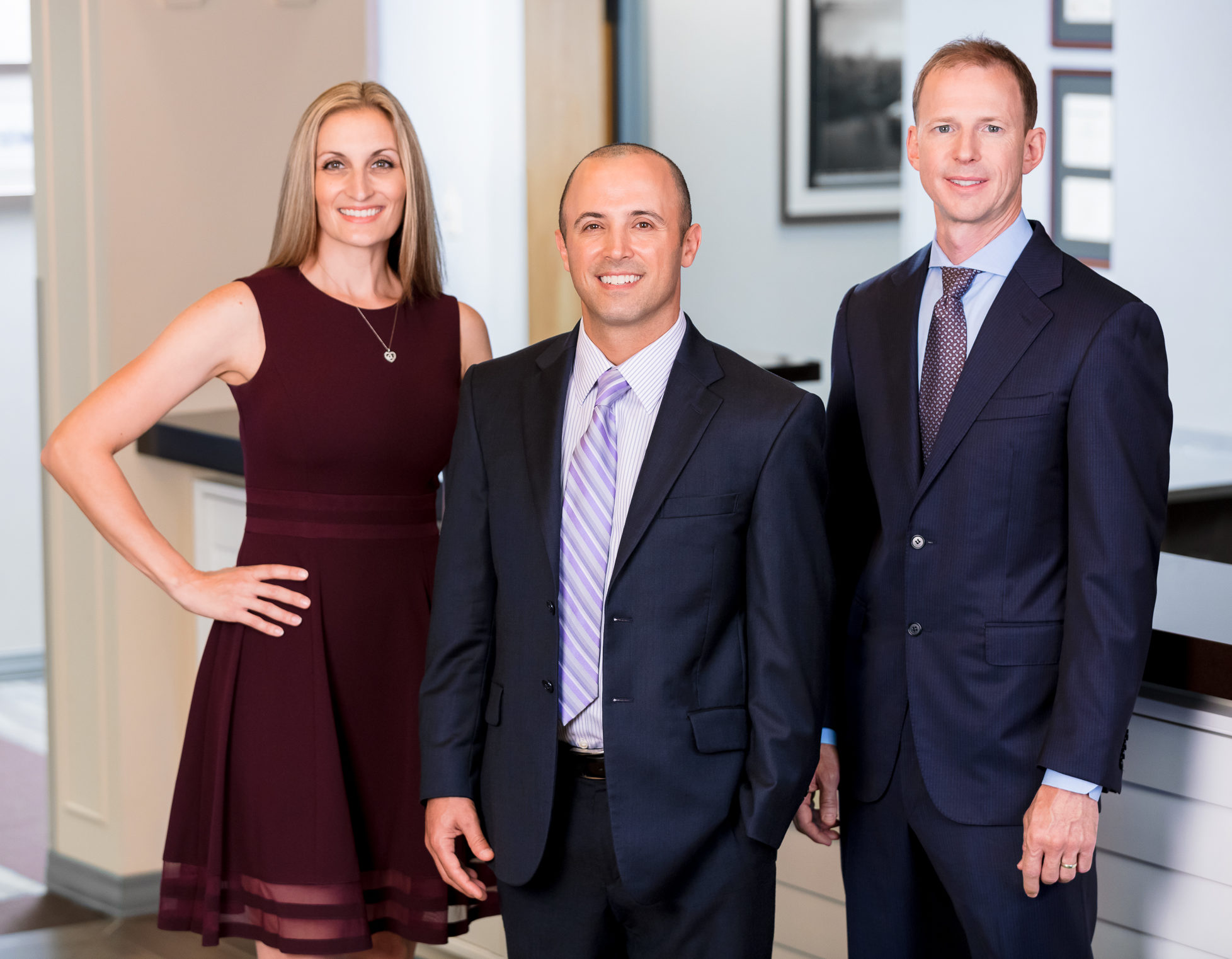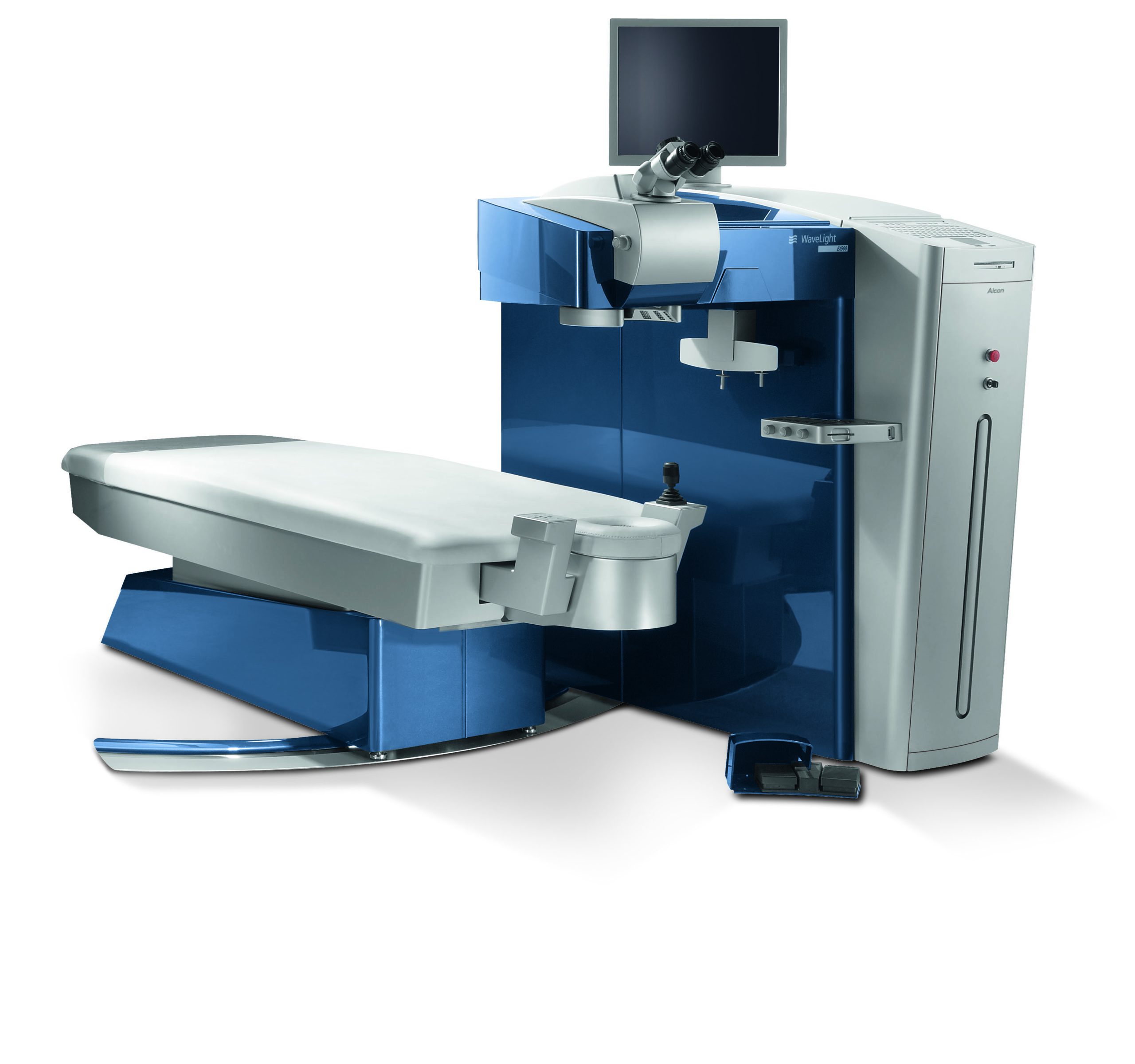The key to producing the best results in vision correction surgery is to combine the best technology available with a skilled surgeon who offers a variety of surgical options. During your personalized complimentary consultation, your surgeon will decide which procedure will be most appropriate for you by taking into consideration the results of your measurements, your needs and your lifestyle.

Drs. Duss, Samara and Diaz believe in a team approach to laser vision correction. They will work together to plan your treatment. Each surgeon is present during your surgery and on call for you every day moving forward.
During the procedure, a special device creates a hinged flap of thin corneal tissue and the flap is gently folded out of the way. The laser reshapes the underlying tissue and the surgeon repositions the corneal flap over the treated area. There it bonds securely without the need for stitches.
LASIK patients recover very quickly and most experience little, if any, discomfort. Functional vision returns very rapidly, with the majority of patients seeing well enough to drive by the next day without glasses or contact lenses. Most patients elect to have LASIK on both eyes at the same time.
PRK treats the surface of the cornea and does not require a corneal flap, as does LASIK. Using very powerful numbing drops, the epithelium, a thin layer of clear protective skin that covers the cornea, is removed. The laser reshapes the underlying tissue and a bandage contact lens (a contact lens with no power) is placed on the eye to keep it comfortable during the healing process. Usually, within three to five days the epithelium is healed completely. You should expect some moderate discomfort for the first 24-48 hours. You will be given instructions on how to manage the discomfort as well as eye drops to speed healing and prevent infection.
Most PRK patients notice an improvement in their vision immediately after surgery. However, vision usually is somewhat blurred while the epithelium is healing. Your functional vision should return in three to seven days while full visual results may not be recognized for three weeks to several months.
Individuals who are over 18 years old and have:
To be a good candidate for LASIK, the cornea must be of a sufficient thickness to allow for the flap to be made and still have enough tissue to achieve the chosen correction. LASIK is the procedure of choice for patients with a mild to moderate degree of nearsightedness, farsightedness or astigmatism.
PRK works well for patients with moderate to high amounts of nearsightedness. It is also used for patients who may not qualify for LASIK due to high degrees of myopia, thin corneas or corneal dystrophies. We also recommend PRK for those who are at a higher risk of dislodging a LASIK flap due to certain occupational or recreational activities (e.g., military, martial arts, etc.).
There may be times when we do not recommend laser vision correction because you may not be a good candidate. Our primary concern is not the number of patients we bring in, but the quality of care we provide. That is why we offer complimentary consultations so that you can find out if you are a candidate without any obligations.

We know that no two eyes are alike, so why should your treatment be any different? The WaveLight® EX500 Laser uses topography-guided technology to track the unique shape of your eye, allowing your surgeon to perform a laser vision correction treatment that is specifically tailored to you and your eyes.
Laser vision correction produces irreversible alterations in the cornea and will be permanent. However, it will not prevent your eyes from changing in the future.
When you reach your mid-forties most people require reading glasses for near tasks, this is called presbyopia. In younger eyes, the lens is soft and flexible, allowing it to change its shape to focus on various distances continually. As our eyes age, the lens cannot change its shape to see things up close anymore. Therefore, reading glasses are required. Some patients try blended vision, meaning one eye is corrected to see best at a distance and the other eye is corrected to see best for reading. Usually, patients try this technique with contact lenses before proceeding with surgery.
Another change that your eyes are expected to make is the progression of cataracts. This is the clouding of the normally clear lens inside your eye. Eventually, cataracts will impair your vision and surgery will be necessary. Fortunately for most, cataracts do not develop until around age 65.
The EVO Visian ICL is an alternative to laser vision correction for correcting moderate to severe myopia (nearsightedness), and in some cases produces better and more predictable vision outcomes than laser vision correction.
Made from a biocompatible collagen-based material, the EVO Visian ICL is a clear implantable lens that is surgically placed inside the eye between the iris (the colored part of your eye) and your natural lens. EVO Visian ICLs function like contact lenses to correct nearsightedness. The difference is that EVO Visian ICLs work from within your eye instead of sitting on the surface of your eye.
Before the procedure, you will be given a mild sedative and anesthetic eye drops to minimize any discomfort and anxiety. Then, a small opening will be made into your cornea that will be used to insert and position the lens. Next, the lens is injected, gently unfolding in your eye. The procedure usually takes about 20-30 minutes. After the surgery is complete, you will leave with a pair of goggles that will protect you from accidentally rubbing or bumping your eyes.
EVO Visian ICL patients recover very quickly and most experience little, if any, discomfort. Functional vision returns very rapidly, with the majority of patients seeing well enough to drive by the next day without glasses or contact lenses. Most patients elect to have surgery on both eyes at the same time.
If you are between the ages of 21 and 45, nearsighted, and have had stable vision for a year, you are an excellent candidate for EVO Visian ICLs. The EVO Visian ICL is made to help correct patients with low myopia (-3 diopters) to high myopia (-20 diopters). Not only is EVO Visian ICL good for candidates with high myopia, but it may be the perfect option for people who are suffering from severe dry eyes or have thin corneas.
Clear Lens Replacement (CLR) replaces your eye’s clear natural lens with an artificial intraocular lens (IOL) to correct your refractive error and achieve sharper focus, reducing your need for reading glasses or bifocals.
The procedure for clear lens replacement is virtually identical to cataract surgery. The difference is that in CLR, the lens being replaced is clear, rather than a cloudy lens due to a cataract.
The doctors and staff at Atlantic Eye Institute take an upfront approach to every aspect of surgery. Understanding the cost factor is as important as knowing the potential for risk. Managing the costs involved and understanding what you are paying for (or not paying for) are important aspects of your decision-making. No doubt you have heard or seen many advertisements for eye correction surgery. Some are deceptive and do not explain all the details involved in the process.
Once you have been pre-screened and your doctor determines what kind of correction you will need, we will provide a quote for your specific procedure. Your cost would include your pre-operative appointment, the surgeon’s fee, the surgery (laser and O.R. supplies), post-operative appointments, your medical eye drops, and enhancement if you were to need one within one year after your treatment.
The type of technology the doctor utilizes is a very important factor. However, it is just as important as the amount of time that your expert surgeon will dedicate to you and the health of your eyes. At Atlantic Eye Institute, your surgeon will be there for you during the entire process. Your eyes are critical to you and just as important to us!
Affordability of surgery is the key for most of us. How does it fit into our household budgets? There are financing options available. And keep in mind that, depending on the type of eyewear you use now, vision correction surgery will pay for itself in 4 to 6 years. Atlantic Eye Institute is pleased to offer Alphaeon Credit no interest payment plans for up to 24 months. Alphaeon Credit lets you begin your treatment or procedure immediately-then pay for it over time with low monthly payments that are easy to fit into your monthly budget. Now you do not have to save up for years to finally get the vision you’ve always wanted.
Although insurance does not cover vision correction surgery, many patients are eligible for a discount through their vision insurance plan for laser vision correction. However, insurance does not currently discount implantable contact lenses or refractive lens exchange.
What is an FSA? A Flexible Spending Account (a.k.a. FSA, flex plan, reimbursement account, Flex 125, Tax Saving Plan, Medical Spending Account, a Section 125, or a Cafeteria Plan), is an employer-sponsored benefit that allows you to pay for eligible medical expenses on a pre-tax basis. If you expect to incur medical expenses that won’t be reimbursed by your regular health insurance plan, you can take advantage of your employer’s FSA, if one is offered.
What is the benefit of an FSA? The contributions you make to an FSA are deducted from your pay BEFORE your Federal, State, or Social Security Taxes are calculated and the contributions are never reported to the IRS. The benefit is that you decrease your taxable income and increase your spendable income which can save hundreds or even thousands of dollars a year.
How does a Flexible Spending Account (FSA) work? At the beginning of the plan year, your employer asks how much you want to contribute for the coming year into your FSA. You have only one opportunity a year to enroll unless you have a qualified “family status change,” such as marriage, birth, divorce, or loss of a spouse’s insurance coverage.
The amount you designate for the year is taken out of your paycheck in equal installments each pay period and placed in a special account by your employer. As you incur medical expenses that are not fully covered by your insurance, you submit a copy of the Explanation of Benefits or the provider’s invoice and proof of payment to the plan administrator, who will then issue you a reimbursement check.
What expenses are eligible? Any expense that is considered a deductible medical expense by the IRS and is not reimbursed through your insurance can be reimbursed through the FSA. These include most elective surgeries, laser vision correction (LASIK), deductibles, and prescription drug co-payments.
We recommend that you determine your candidacy prior to making any allocations to your FSA plan. Schedule a free consultation at Atlantic Eye Institute to determine your candidacy and cost.